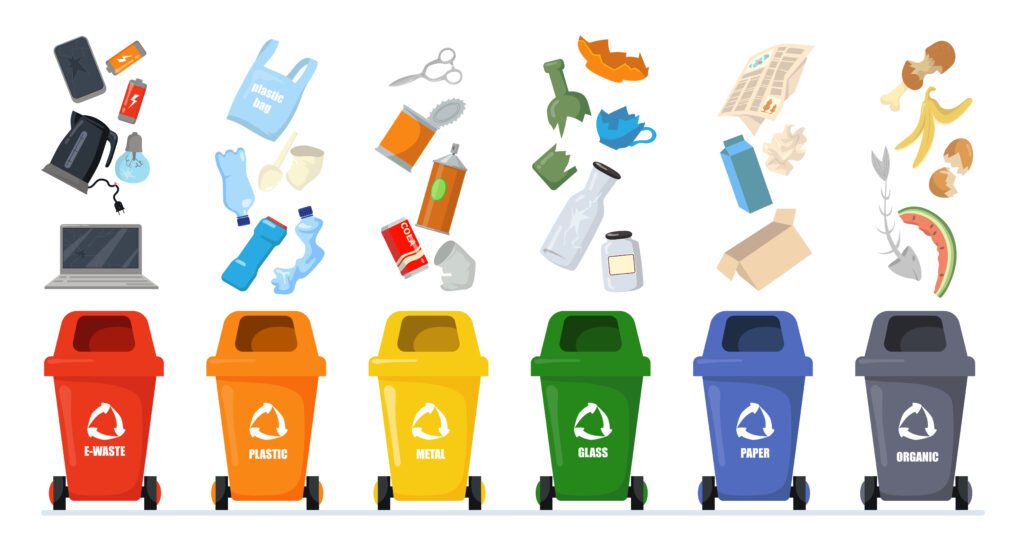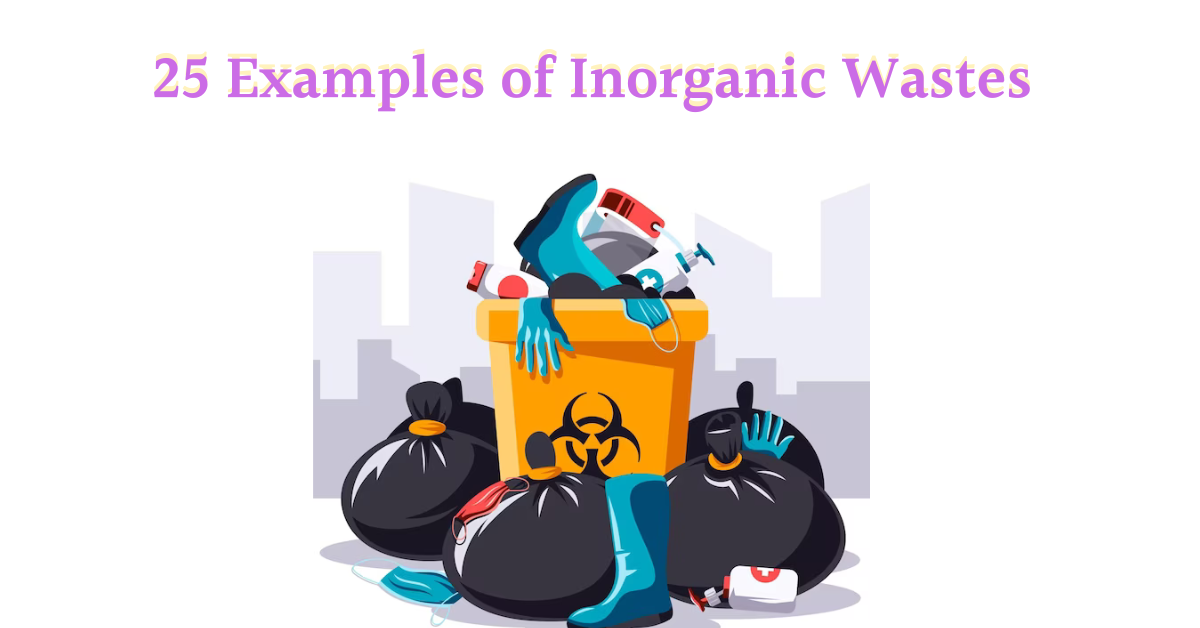Inorganic wastes are non-biodegradable materials that do not decompose naturally and can persist in the environment for a long time. Proper management and disposal of these wastes are essential to prevent environmental pollution.
Write some examples of inorganic wastes.
In this article, we present 25 examples of inorganic wastes commonly found in various settings.
| No. | Waste Example |
|---|---|
| 1 | Plastic bottles |
| 2 | Aluminum cans |
| 3 | Glass containers |
| 4 | Electronic waste (e-waste) |
| 5 | Batteries |
| 6 | Styrofoam |
| 7 | Metal scraps |
| 8 | Paint cans |
| 9 | Fluorescent bulbs |
| 10 | PVC pipes |
| 11 | Tires |
| 12 | Computers and accessories |
| 13 | Cell phones |
| 14 | Ceramic products |
| 15 | Pesticide containers |
| 16 | Unused or expired medications |
| 17 | Mercury-containing thermometers |
| 18 | Asbestos |
| 19 | Lead-acid batteries |
| 20 | Ink cartridges |
| 21 | Fireworks residues |
| 22 | Radioactive waste |
| 23 | Concrete debris |
| 24 | Cigarette butts |
| 25 | Solvents and chemical wastes |

Uses of Inorganic Wastes
1. Plastic bottles: Non-biodegradable containers used for packaging beverages and other products.
2. Aluminum cans: Non-biodegradable beverage containers made of aluminum.
3. Glass containers: Non-biodegradable glass bottles and jars used for storing various products.
4. Electronic waste (e-waste): Discarded electronic devices like computers, TVs, and smartphones.
5. Batteries: Non-biodegradable power sources for various electronic devices.
6. Styrofoam: Non-biodegradable foam used for packaging and insulation.
7. Metal scraps: Waste metals and metal objects that do not break down naturally.
8. Paint cans: Containers used for storing paint products, often made of metal.
9. Fluorescent bulbs: Non-biodegradable light bulbs containing mercury vapor.
10. PVC pipes: Non-biodegradable plastic pipes used in plumbing and construction.
11. Tires: Rubber-based non-biodegradable products used in vehicles.
12. Computers and accessories: E-waste category including computers, keyboards, and mice.
13. Cell phones: E-waste category consisting of discarded mobile phones.
14. Ceramic products: Non-biodegradable products made of clay and hardened by heat.
15. Pesticide containers: Containers used for storing and distributing pesticides.
16. Unused or expired medications: Pharmaceuticals and drugs that are no longer in use.
17. Mercury-containing thermometers: Thermometers containing toxic mercury.
18. Asbestos: Hazardous mineral fibers used in construction materials.
19. Lead-acid batteries: Batteries containing lead used in vehicles and backup systems.
20. Ink cartridges: Non-biodegradable containers used in printers.
21. Fireworks residues: Non-biodegradable waste left behind after fireworks displays.
22. Radioactive waste: Hazardous waste containing radioactive materials.
23. Concrete debris: Non-biodegradable construction waste.
24. Cigarette butts: Non-biodegradable waste from discarded cigarette filters.
25. Solvents and chemical wastes: Non-biodegradable hazardous chemicals and their containers.
It is crucial to handle inorganic wastes responsibly and recycle or dispose of them properly to protect the environment and promote sustainability. Proper waste management practices can significantly reduce the negative impact of inorganic waste on our surroundings.

